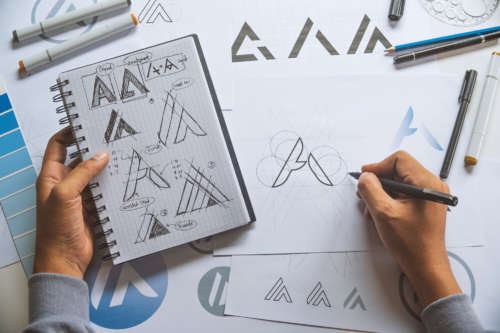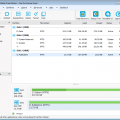Maybe you’re a contract graphic designer doing small, one-off projects for local businesses. Or, an in-house professional responsible for overseeing all graphic creation in a large corporation. Regardless, you can always be improving your craft.
Read on as we go over a few more advanced graphic design skills that will substantially improve your ability to communicate your message in the medium.
1. User Interface Design
At first glance, you might think this doesn’t apply to you. Perhaps your work focuses on something where ‘user interfaces’ seem worlds away from your final product.
Consider this; regardless of what your final product is, the odds of it ending up within a user interface are virtually guaranteed. If you make a graphic for an article header for a local newspaper, for example, that graphic will likely end up in the online version of the publication.
And like it or not, that makes it a part of the user interface of the website.
Knowing how to design with that type of presentation in mind already makes this a useful skill. Designing user interfaces directly, meanwhile, makes it substantially more worthwhile since the available pool of work for those who can do both is much larger.
Further, user interface creation is one of the more lucrative ways to apply the skills of a graphic designer. Per Indeed.com, user interface designers make, on average, more than double the income of a traditional graphic designer.
2. Color Psychology
As a designer, knowledge of color psychology is one of the most direct ways to increase the efficacy of your campaign. Responses to colors are hard-wired into us, so leveraging these properties with your design skills can multiply the effectiveness of your campaign, even with no other changes.

3. Responsive/Adaptive Graphic Design Skills
One of the essential considerations in the field of graphic design today is presentation across many mediums. Use those visual design skills. Think of how your graphic would present on a vertical or horizontal screen, as large as a billboard or as small as a smartwatch.
Ensuring that the essential information you need to communicate with your design comes across regardless of presentation, is critical.
4. Coherency
Having coherent theming across multiple platforms is vital in the modern world.
This includes a simple and consistent color palette, a logo design that’s versatile, and typography that either doesn’t change or conforms to its platform.
5. Time Management
Time management is an important skill regardless of what you do for a living, but thankfully, those who work in branding have a bevy of tools available to them to make life easier. Time is money, so using tools that can speed up your workflow even a little is always called for.
From using automatic processing tools and plugins in photoshop to outsourcing the generation of alternate color schemes and presentations, consider what your time is worth and whether there’s a faster way to get parts of your project done.
If your creativity is blocked, you could get a freelancer online to give you five fresh ideas, and go from there. You could use a tool like Spark to customize your own label so you can move on to creating the rest of your branding.
Exercise Your Skills
Use-it-or-lose-it is just as applicable to soft skills like communication as it is when applied to hard skills like foreign languages. All of the above are only tools in your toolkit, meant to complement your graphic design skills.
Did you enjoy this article? Then be sure to check back here often for updated content!





